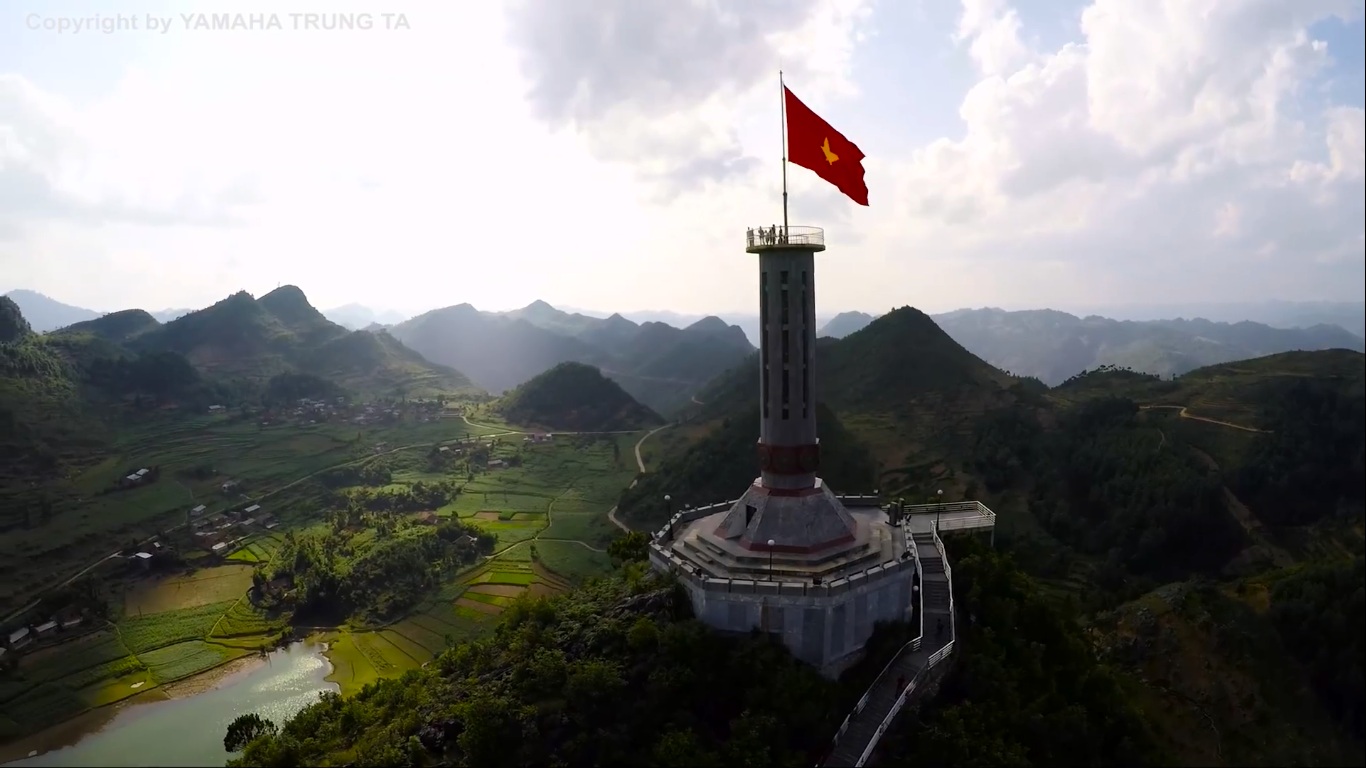Lung Cu Flag Tower: A Symbol of Vietnam Supremacy

Lung Cu Flag Tower, located at Dong Van District, Ha Giang Province, is a symbol of supremacy and mystery as it stands at 1,700 metres high carrying the Vietnamese flag and holding everyone in continuous wonder about its true origin.
One story comes from the ethnic group Lo Lo which lives at the foot of the Lung Cu Mountain. According to them, there are two lakes at the peak which they call “wells” which they believe are the eyes of a dragon. Based on their belief, life in the region used to be difficult because of lack of water. The dragon took pity at the villagers and so before going to heaven, he left his eyes which later became lakes. One belongs to the Lo Lo, while the other to the Mongs, another ethnic minority group which resides in the same area.
Another tale of origin about Lung Cu goes that it existed since the 18th century wherein Emperor Quang Trung ordered a huge bronze drum to be placed at the summit of the mountain and beat three times every two hours after as a sign of triumph and freedom against their Northern attackers in 1978. The mountain was thus named Lung Cu, from the original word “Long Co” which means “King’s Drum.”
To reach the summit of Lung Cu Mountain, visitors have to climb 389 stone steps and another 140 steps on a spiral iron staircase in order to get to the tower itself. The octagonal monument at the peak is 33 metres high. The base is carved with patterns of Dong Son drums, where the place got its name in the first place, thus a symbol of Vietnamese culture. A 54-square metre flag stands proud at the top of the tower, representing all 54 ethnic groups in Vietnam.
The Nho Que River below adds further beauty to the tower, leading straight to the Ma Pi Leng Pass, one of the four highest passes in the country. Houses of the Lo Lo ethnic group can be seen by the rice fields, adding more charm to the whole scene.










